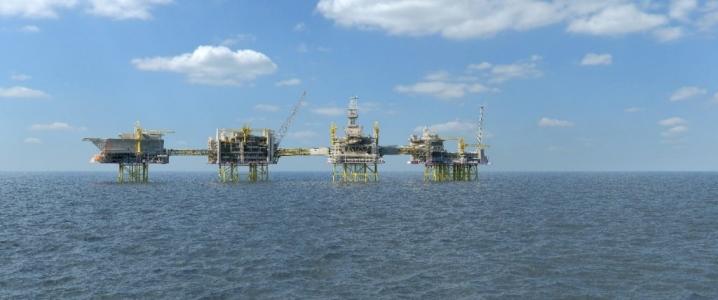Authored by Tsvetana Paraskova via Oilprice.com,
Despite cost controls, increased efficiency, and higher activity offshore Norway, oil production at Western Europe’s largest oil producer fell in 2018 compared to 2017 and is further expected to drop this year to its lowest level since 1988.
Last year, oil production in Norway fell to 1.49 million barrels per day (bpd), down by 6.3 percent compared to the 1.59 million bpd production in 2017, the oil industry regulator, the Norwegian Petroleum Directorate (NPD), said in its annual report this week. Oil production this year is forecast to drop by another 4.7 percent from last year to reach in 2019 its lowest level in thirty years—1.42 million bpd, the NPD estimates show.
As bad as it sounds, this year’s expected low production is not the worst news for the Norwegian Continental Shelf (NCS) going forward.
Oil production is expected to jump in 2020 through 2023, thanks to the start up in late 2019 of Johan Sverdrup—the North Sea giant, as operator Equinor calls it. With expected resources of 2.1 billion—3.1 billion barrels of oil equivalent, Johan Sverdrup is one of the largest discoveries on the NCS ever made. It will be one of the most important industrial projects in Norway in the next 50 years, and at its peak, the project’s production will account for 25 percent of Norway’s total oil production, Equinor says.
The worst news for Norway’s oil production, as things stand now, is that after Johan Sverdrup and after Johan Castberg in the Barents Sea scheduled for first oil in 2022, Norway doesn’t have major oil discoveries and projects to sustain its oil production after the middle of the 2020s.
The NPD started warning last year that from the mid-2020s onward, production offshore Norway will start to decline “so making new and large discoveries quickly is necessary for maintaining production at the same level from the mid-2020s.”
In the report this week, NPD Director General Bente Nyland said:
“The high level of exploration activity proves that the Norwegian Shelf is attractive. That is good news! However, resource growth at this level is not sufficient to maintain a high level of production after 2025. Therefore, more profitable resources must be proven, and the clock is ticking”.
Norwegian oil production in 2018 was expected to drop compared to the previous year, but the decline “proved to be greater than expected,” the NPD said, attributing part of the production fall to the fact that some of the newer fields are more complex than previously assumed, and certain other fields delivered below forecast, mainly because fewer wells were drilled than expected.
In October 2018, Germany’s Wintershall warned that its Maria oil and gas field off Norway was not fully meeting expectations due to issues with water injection. Those issues haven’t been solved yet, NPD’s Nyland told Reuters this week.
Exploration activity in Norway considerably increased in 2018 compared to 2017, with 53 exploration wells spud, up by 17 wells compared to the previous year. Based on company plans, this year’s exploration activity is expected to remain high and around the 2018 number of wells spud, the NPD says.
The key reasons for higher exploration activity have been reduced costs, higher oil prices lifting exploration profitability, and new and improved seismic data on large parts of the Shelf, the NPD noted.
However, the Norwegian oil regulator warned that “resource growth at this level is not sufficient to maintain production of oil and gas at a high level after 2025. Therefore, it is essential that more profitable resources are proven in the next few years.”
Norway still holds a lot of oil under its Shelf, and those remaining resources could sustain its oil and gas production for decades to come. The industry’s problem is that after Johan Sverdrup and Johan Castberg there haven’t been major discoveries.
According to the NPD’s resource estimate, nearly two-thirds of the undiscovered resources lie in the Barents Sea.
“Therefore, this area will be important for maintaining production over the longer term,” the regulator said.
Operators on the NCS have made great efforts to try to make even smaller discoveries profitable by hooking them to existing platforms and production hubs. However, these smaller finds alone can’t offset maturing production—Norway needs major oil discoveries, and it needs them soon, considering that the lead time from discovery to production is several years.
via RSS http://bit.ly/2FrOzys Tyler Durden


